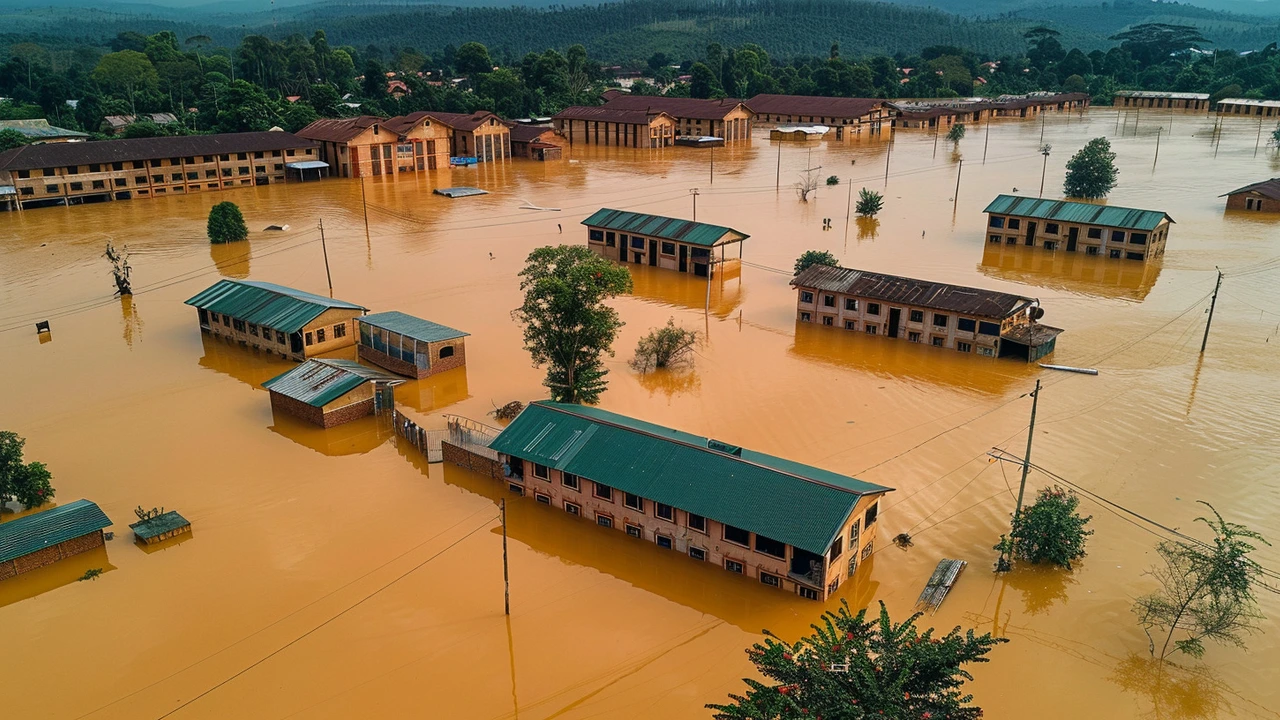Kenya Delays School Reopening amid Catastrophic Floods and Approaching Cyclone Hidaya
 May, 3 2024
May, 3 2024
In a significant response to the ongoing natural disaster striking East Africa, President William Ruto of Kenya announced an indefinite postponement of the scheduled school reopening. This decision, prompted by the devastating floods that have wreaked havoc across the country and the looming threat of Cyclone Hidaya, reflects the urgent need for comprehensive disaster management and safety prioritization for Kenya's young learners.
The Escalation of the Crisis
The crisis began with a period of heavy rains which rapidly evolved into widespread flooding, severely impacting daily life and infrastructure. In the past weeks, these extreme weather conditions have resulted in more than 200 fatalities within Kenya alone, with an additional 150,000 residents forced from their homes seeking refuge from the relentlessly rising waters. The anticipation of Cyclone Hidaya, expected to impact coastal areas, has only heightened these challenges, complicating rescue and relief operations further.
Impact on Education and Infrastructure
Originally, educational authorities planned only a brief delay in the academic schedule, hoping the situation would stabilize. However, as floodwaters invaded countless communities, many schools themselves succumbed to damage or became temporary shelters for displaced families. This unintended role for educational facilities has underscored the broad and deeply woven impact of severe weather on societal infrastructure, forcing the Ministry of Education to reassess the viability of conducting classes under such compromised conditions.
Reaching Out to the Displaced
As an immediate response, the government has earmarked schools as critical points of refuge, albeit a temporary solution as plans to relocate those affected to more permanent camps are underway. This use of educational facilities, while lifesaving in the short term, brings additional complications in managing the dual role of these institutions as centers for learning and temporary housing.
Government Response and Public Safety Measures
Despite efforts to manage the crisis, public sentiment has wavered with critiques pointing towards what is perceived to be an inadequate response by the government. As floodwaters continue to pose a threat, authorities have issued evacuation orders for residents living near the 178 identified at-risk dams and reservoirs, while also highlighting the dangers to those residing downstream along the Tana River. These proactive evacuations are part of a broader strategy to mitigate further disaster as Cyclone Hidaya approaches.
Broader Regional Impact
The repercussions of this catastrophic weather event extend beyond Kenya’s borders, affecting neighboring countries including Tanzania, Burundi, Ethiopia, and Somalia, each grappling with their own challenges brought on by the heavy rains and flooding. This regional calamity has prompted a transnational dialogue on strategies for disaster preparedness and response, emphasizing the need for collaboration in face of such environmental adversities.
Looking Forward: Preparing for Recovery
With schools closed indefinitely and communities bracing for the cyclone, the focus has inevitably shifted toward long-term recovery and fortifying resilience against future calamities. Lessons learned from the current crisis are likely to shape policy amendments and infrastructure upgrades, aiming at a safer and more prepared national response for inevitable future challenges wrought by climate variability. Citizens and government officials alike are now tasked with rebuilding not just physical structures but also the sense of security and normalcy that has been shaken by this series of environmental misfortunes.